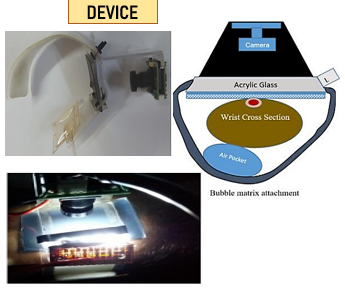Industrial Consultancy & Sponsored Research (IC&SR) , IIT Madras
Device for Sensing Surface Pressure and Methods thereof
Categories for this Invention
Technology: Device for checking surface pressure
Category: Assistive, Test Equipment & Design Manufacturing
Industry: Advanced device manufacturing
Application: Robotics,Biomedical
Market: The global market size valued at US$ 805 million in 2023 and is anticipated to reach US$ 1361.2 million by 2030, witnessing a CAGR of 7.7% during the forecast period 2024-2030.
Image Gallery
Problem Statement
- Most deployable solar arrays for spacecraft use crystalline solar cells mounted to rigid honeycomb panels.
- Flexible solar arrays are limited to crystalline solar cell arrays packaged in a long roll or pleated stack.
- Solar cells are typically disposed on a solar array, which is typically used on satellites.
- Solar arrays consist of one or more solar panels electrically attached to each other and to the satellite.
- Each solar panel in a solar array includes numerous individual solar cells, connected together electrically at their adjacent edges.
- Solar arrays also include an underlying structure for deployment of a substantial number of individual solar cells from the satellite body.
- The goal is to minimize the volume of the stowed package of the solar array while maximizing the available solar cell area that can be packaged when stowed and subsequently deployed.
Technology

- A device for measurement of pressure, the device comprising:
- optical markers embedded in a flexible transparent elastomer matrix adapted to be placed in contact with a surface enveloping a volume subject to internal pressure variation,
- wherein the optical markers are composed of a plurality of bubbles configured to deform or displace or both, under the pressure variation;
- a camera for capturing deformation or displacement or both, of the bubbles in the matrix under said pressure variation; and
- a processing unit for receiving the images/videos captured by the camera to generate a signal characteristic of the pressure variation.
- Preparing Pressure Sensor Device
- Mixing resin and hardener solutions.
- Curing the elastomer at normal atmospheric pressure for 4 hours.
- Degassing the elastomer in a vacuum chamber to form optical markers.
- Optical markers consist of controlled-size bubbles formed during degassing.
Key Features / Value Proposition
Surface Pressure Sensing Device:
“Optical Markers in Elastomer”
- Composed of optical markers.
- Flexible, transparent.
Camera for Deformation/Displacement Capture
- Captures pressure variation.
- Captures displacement.
Processing Unit for Pressure Variation Signal Generation
- Includes amplification, frame transformation, grayscale image conversion, clahe equalization, segmentation, blob detection, bubble density, pressure distribution changes, and spatial map generation.
Optical Marker and Camera Process
- Placing marker on acrylic glass.
Lucas-Kanade optical flow.
- Mean of norm comparison.
- Determining displacement vector.
- Fast Fourier Transform.
Noise-Free Signal Filtering for Surface Pressure Variation
- Mixing solution A and B.
- Curing elastomer.
- Vacuum chamber degassing.
Vacuum Range:
- 100mmHg to 650mmHg
Device Processes Images/Videos
- Utilizes processing unit for amplification, frame transformation, and clahe equalization.
- Segments frames into sub-frames for specific bubble density, blob detection, and pressure distribution changes.
Optical Marker and Camera Mounting
- Marker placed on acrylic glass.
- Camera mounted on acrylic glass frame.
- Markers deform under pressure variation.
Bubble Diameter Overview
- Ranges from 0.5mm to 4mm.
Filtered Noise-Free Signal Overview
- Provides surface pressure variation.
“Current Method Increases Elastomer Viscosity”
- Increases elastomer viscosity from 2000cps to 5500cps in 2500 seconds.
Bubble Stability Control
- Adjusting elastomer viscosity.
- Solution A: Polydimethyle siloxane.
- Solution B: Cross linker or resin/hardener combination.
Questions about this Technology?
Contact For Licensing
sm-marketing@imail.iitm.ac.in
ipoffice2@iitm.ac.in
Research Lab
Prof. Manivannan Muniyandi
Department of Applied Mechanics
Intellectual Property
IITM IDF Ref. 2518
Patent No: IN 545164
Technology Readiness Level
TRL-6
Technology validated in relevant environment (Industrially relevant enabling technologies)
